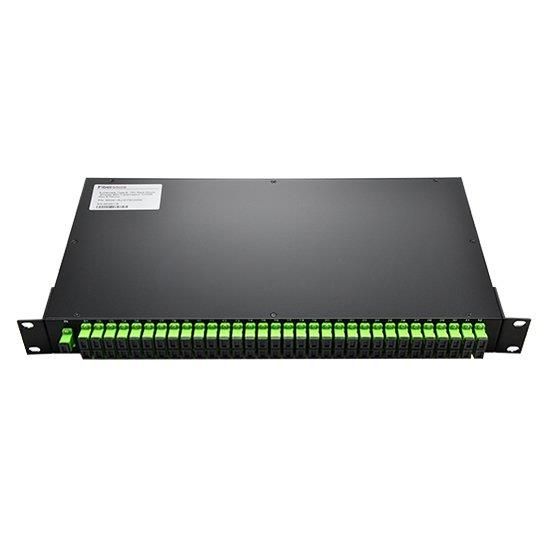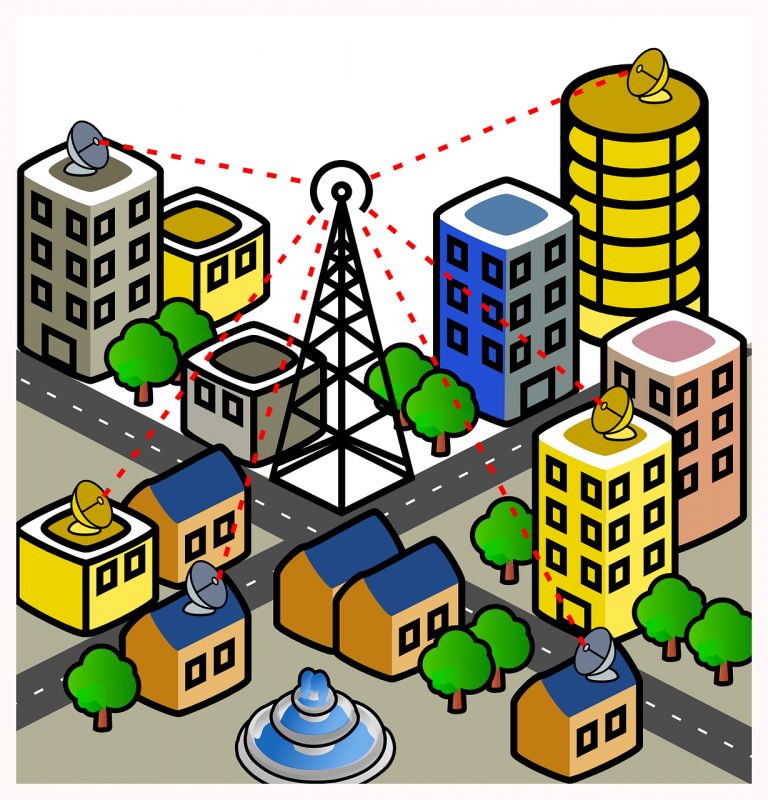DWDM Equipment: A Beginner’s Guide
Intro
DWDM equipment is an essential tool for any modern communication network. It stands for Dense Wavelength Division Multiplexing, and it allows multiple channels of data to travel through the same fiber-optic cable. This technology has become increasingly popular in recent years, as it can increase the capacity of networks significantly without having to install new cables. In this beginner’s guide, we will explore the basics of DWDM equipment, how it works, and its various uses.
What is DWDM?
DWDM stands for Dense Wavelength Division Multiplexing. It is an advanced technology that is used in fiber optic networks to increase the amount of data that can be transmitted over a single optical fiber. This is achieved by dividing the optical fiber into several wavelengths, or colors, which are then used to carry different streams of data simultaneously.

DWDM is a highly efficient way to transmit large amounts of data over long distances without the need for expensive repeaters or signal amplifiers. It allows multiple data streams to be sent simultaneously over a single fiber, greatly increasing the capacity of the network and reducing the need for additional fibers.
The technology behind DWDM involves using specialized equipment such as DWDM multiplexers, transponders, and filters. These components work together to combine and separate the different wavelengths of light traveling through the fiber, allowing for the transmission of multiple streams of data.
DWDM is commonly used in large-scale telecommunications networks, as well as in other industries such as finance, healthcare, and media. Its high bandwidth capacity and efficient use of resources make it an ideal choice for organizations with large amounts of data to transmit.
Overall, DWDM is an advanced and powerful technology that is changing the way we think about fiber optic networking. By enabling high-capacity, high-speed data transmission over a single fiber, it is helping to drive innovation and improve connectivity around the world.
How does DWDM work?
DWDM, or Dense Wavelength Division Multiplexing, is a technology that enables the transmission of multiple wavelengths of light over a single optical fiber. Essentially, it is a method for transmitting more data over the same amount of fiber.
DWDM works by combining multiple wavelengths of light into a single optical fiber. This is done using specialized DWDM equipment such as a DWDM multiplexer or a DWDM filter. These components are designed to combine the different wavelengths of light into a single signal, which can then be transmitted over a fiber optic cable.
Once the combined signal reaches its destination, it is split back into its individual wavelengths using another DWDM component called a demultiplexer. The demultiplexer separates the different wavelengths of light and sends them to their respective receivers.
One of the benefits of DWDM technology is that it allows for a large amount of data to be transmitted over a single fiber optic cable. This is because DWDM can transmit multiple channels of information over different wavelengths of light. For example, a 40 channel DWDM wavelength chart can transmit up to 40 different channels of data simultaneously.
There are different types of DWDM equipment available from various dwdm equipment manufacturers and dwdm vendors. Some common types of DWDM equipment include DWDM transponders, DWDM muxes, and DWDM modules. Other important components of a DWDM system include roadm ciena equipment, fiber multiplexer single mode components, and WDM machines.
Overall, DWDM technology is a powerful tool for fiber optic networking. It enables higher data transmission rates, better use of existing fiber infrastructure, and more efficient network management. However, it is important to choose the right DWDM equipment and consider factors such as cost, scalability, and compatibility with existing network infrastructure.
Benefits of using DWDM equipment
DWDM equipment offers a range of benefits that make it an ideal choice for businesses and organizations that require high-speed and high-capacity data transmission over long distances. Here are some of the key advantages of using DWDM equipment:

- High capacity: DWDM systems are capable of transmitting data at rates of up to 100Gbps per channel, allowing businesses to transmit large amounts of data quickly and efficiently.
- Scalability: DWDM systems are highly scalable, allowing businesses to easily add or remove channels as needed to meet their changing bandwidth requirements.
- Cost-effective: By using a single fiber optic cable to transmit multiple channels, DWDM systems can help businesses save on infrastructure costs compared to other high-speed networking solutions.
- Reliable: DWDM equipment is highly reliable and can be used in a wide range of applications, from telecommunications and data centers to video streaming and surveillance.
- Reduced latency: By reducing the number of regenerators needed to amplify and reshape the signal, DWDM systems can help reduce latency and improve network performance.
Overall, DWDM equipment offers a range of benefits that make it an ideal choice for businesses looking to improve their data transmission capabilities. If you’re interested in learning more about DWDM systems and how they work, be sure to check out our fiber optic networking tutorial pdf for more information.
Types of DWDM equipment
There are various types of DWDM equipment that can be used in different applications. These include:
- Transponders: These are devices that convert signals from one format to another. In DWDM, transponders convert electrical signals to optical signals and vice versa.
- Multiplexers/demultiplexers: These devices are used to combine or separate multiple signals on a single fiber. A multiplexer combines several signals onto a single fiber, while a demultiplexer separates the signals from a single fiber.
- Optical amplifiers: These devices amplify optical signals to compensate for the loss of signal strength that occurs as light travels along the fiber. Optical amplifiers can be either erbium-doped fiber amplifiers (EDFAs) or Raman amplifiers.
- Optical filters: These devices are used to selectively block or allow certain wavelengths of light. They can be used to filter out unwanted signals or to separate different wavelengths in a DWDM system.
- Optical add-drop multiplexers (OADM): These devices are used to add or drop individual channels from a DWDM system without disrupting other channels.
Overall, DWDM equipment plays a crucial role in ensuring that optical signals are transmitted efficiently and effectively over long distances. With the various types of DWDM equipment available, it is important to choose the right equipment for your specific application to ensure optimal performance.
Components of a DWDM system
A DWDM system typically consists of several components that work together to provide a high-speed data transmission solution. These components include the following:
- Optical transmitters: These devices generate the light signals that are modulated to transmit data over the optical fiber. They use a laser source to generate light in the required wavelength range.
- Optical amplifiers: These components boost the strength of the light signals, allowing them to travel longer distances without being degraded. The two most common types of optical amplifiers used in DWDM systems are erbium-doped fiber amplifiers (EDFAs) and Raman amplifiers.
- Multiplexers/demultiplexers: These devices are used to combine or separate different wavelengths of light signals on the same fiber. Multiplexers combine signals from several sources onto a single fiber, while demultiplexers split the signals back out into their separate channels.
- Optical filters: These devices are used to clean up the optical signals by removing unwanted wavelengths and noise from the signal.
- Optical switches: These components are used to route the light signals to different destinations as needed.
Overall, a DWDM system combines the signals from multiple sources onto a single optical fiber, using different wavelengths of light for each signal. The resulting high-speed data transmission allows for efficient and cost-effective communication over long distances.
DWDM applications
DWDM technology has become increasingly popular in a range of applications across different industries. The primary application of DWDM is in telecommunications networks, where it is used to expand network capacity and improve the efficiency of data transmission. It allows network providers to transmit large volumes of data over long distances without the need for expensive fiber optic cables or equipment.
DWDM is also used in the broadcast and media industries, where it is used to transmit high-quality video content over long distances. This is particularly important for live broadcasts, such as sports events and news broadcasts, where the transmission of high-quality video in real-time is crucial.
The technology is also used in the medical industry for applications such as telemedicine, which involves the remote diagnosis and treatment of patients using video conferencing and other technologies. This allows healthcare providers to reach patients in remote or underserved areas, improving access to medical care.
Other industries that use DWDM include the military, aerospace, and transportation sectors, where it is used to transmit critical data over long distances. The technology is also used in research and development for applications such as high-speed data transfer between research facilities.
In summary, DWDM technology has numerous applications in various industries, and its versatility and efficiency make it an ideal choice for any organization looking to improve its data transmission capabilities. With the increasing demand for high-speed data transmission, the demand for DWDM technology is only set to grow in the future.
Key considerations when choosing DWDM equipment
When it comes to choosing DWDM equipment, there are several key factors that should be considered to ensure optimal performance and cost-effectiveness.
First and foremost, it is important to understand your organization’s unique needs and requirements for DWDM. This includes considering the number of channels needed, the distance over which they will be transmitted, and the types of signals being transported. Once these requirements are established, you can begin to evaluate the various DWDM equipment options available on the market.
One important factor to consider is the scalability of the DWDM equipment. As your organization grows and requires additional bandwidth, it is important that your DWDM equipment can be easily expanded to meet these needs. Additionally, it is important to ensure that your DWDM equipment is compatible with your existing network infrastructure and can be integrated seamlessly into your network architecture.
Cost is also an important consideration when choosing DWDM equipment. While it may be tempting to opt for the cheapest option available, it is important to remember that investing in high-quality DWDM equipment can lead to significant cost savings over the long term, as well as improved network performance.
Other factors to consider when choosing DWDM equipment include reliability, ease of maintenance, and compatibility with industry standards. By carefully evaluating these factors and selecting the right DWDM equipment for your organization, you can ensure optimal network performance and cost-effectiveness.
dwdm equipment manufacturers,dwdm vendors,dwdm multiplexer,dwdm transponder,wdm machine,dwdm mux,40 channel dwdm wavelength chart,dwdm filter,dwdm module,dwdw meaning,fiber multiplexer single mode,fiber optic networking tutorial pdf,roadm ciena,Wdwm,
Also read:







